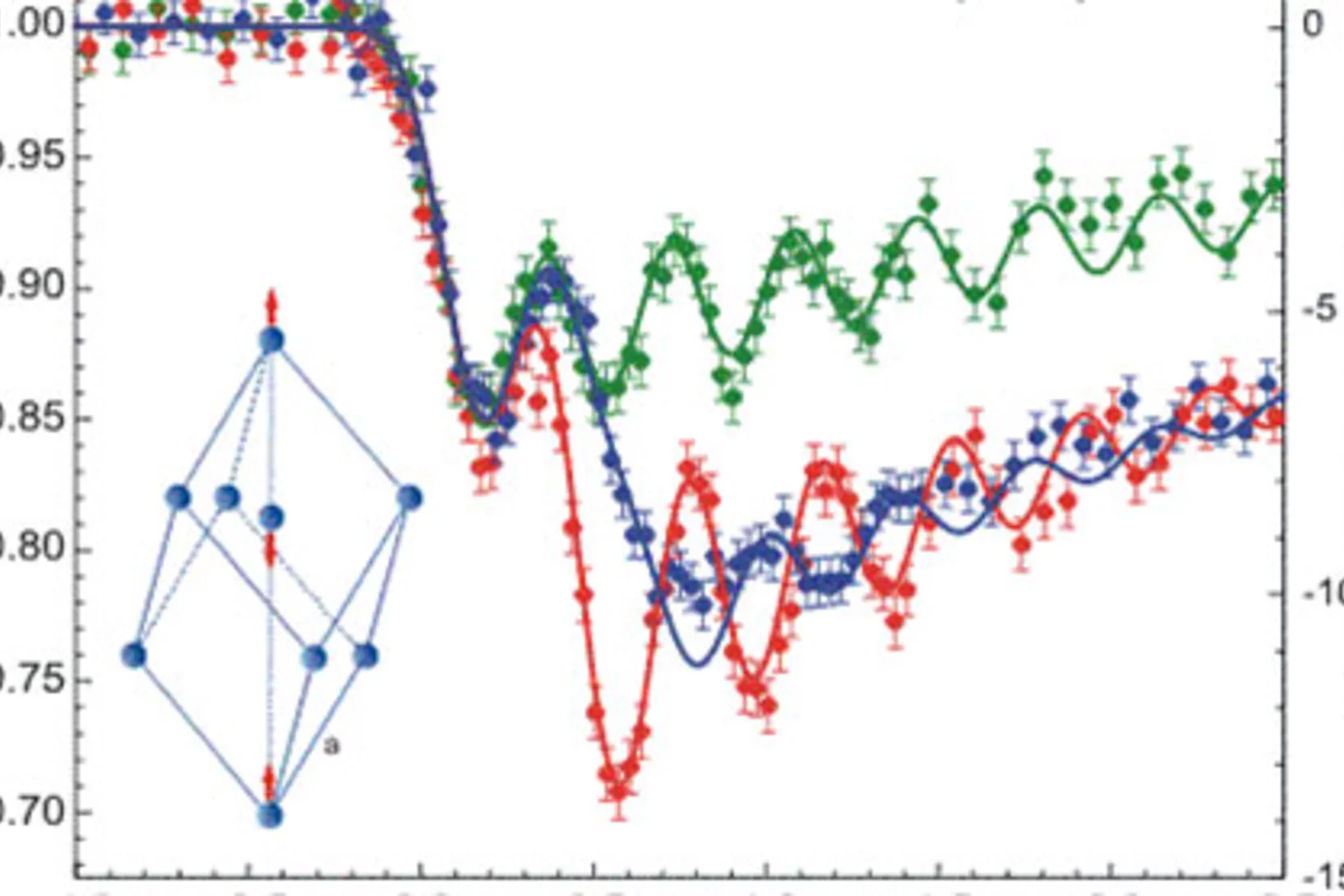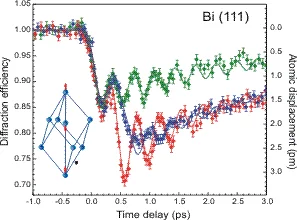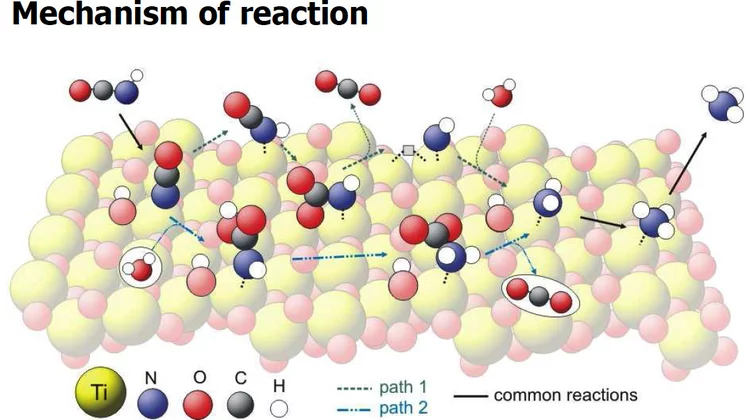Researchers at the Paul Scherrer Institute PSI are looking for answers to essential questions concerning the underlying structures of matter and the fundamental principles of nature. They study the composition and properties of elementary particles – the smallest building blocks of matter – or investigate the structure of biological molecules and how they perform their function. The knowledge gathered in this way opens up new approaches to finding solutions in science, medicine and technology.
Find out more at Overview Fundamentals of Nature
Was beim Computer im Kopf vorgeht
Publikation in der Online-Ausgabe von Nature. Ein Forscherteam unter der Leitung von Alan Drew (Univ. Freiburg, Schweiz und Queen Mary College, London, England) und Elvezio Morenzoni (Paul Scherrer Institut, Villigen, Schweiz) hat als erstes im Detail die magnetischen Vorgänge in einem Lesekopf – ähnlich dem, der Daten von der Festplatte eines Computers liest – verfolgt.This news release is only available in French and German.
Bereits Tradition:
Der 6. Nationale Tochtertag am Paul Scherrer Institut. Sie sind lebhaft, sie sind lässig und sie wollen alles ganz genau wissen: Die 57 Mädchen, die am Nationalen Tochtertag ihre Eltern oder Göttis ans PSI begleitet haben. Vater oder Mutter einmal bei der Arbeit über die Schulter zu schauen, war der eine Aspekt dieses besonderen Tages.This news release is only available in German.
Saubere Dieselverbrennung für sauberere Meeresluft
Gemeinsam mit der Industrie forscht man am Paul Scherrer Institut an neuen Schiffsmotoren. Was bei Dieselfahrzeugen zu Land schon lange die Norm ist, soll nun auch auf den Meeren umgesetzt werden: Nicht nur Lastwagen und Dieselautos fahren stickoxidreduziert, sondern auch Schiffe. Während dieses Ergebnis bei Fahrzeugen hauptsächlich durch den Einbau von Katalysatoren erreicht wird, ist das Ziel bei Schiffen eine innermotorische Lösung.This news release is only available in German.
Röntgenbilder mit Durchblick
Der Nationale Latsis-Preis 2008 geht an Franz Pfeiffer. Der Physiker hat einen Weg gefunden, die in der Spitzenforschung angewandten Verfahren der Röntgentechnik auch für gewöhnliche Röntgengeräte nutzbar zu machen. Der mit 100'000 Franken dotierte Preis wird jährlich vom Schweizerischen Nationalfonds (SNF) im Auftrag der Latsis-Stiftung vergeben.This news release is only available in German.
Den Puls der Forschung gespürt
Tage der offenen Tür. Sie waren faszinierend, sie waren erlebnisreich und sie lockten 12 000 Besucher an: die Tage der offenen Tür am Paul Scherrer Institut in Villigen. An 20 Stationen gaben Physiker, Biologinnen, Mediziner, Chemikerinnen, Ingenieure und Technikerinnen Auskunft über ihre Arbeit.This news release is only available in German.
Building blocks of an artificial kagome spin ice: Photoemission electron microscopy of arrays of ferromagnetic islands
Arrays of dipolar coupled ferromagnetic islands arranged in specific geometries provide ideal systems to
directly study frustration. We have examined with photoemission electron microscopy the magnetic configurations
in three basic building blocks of an artificial kagome spin ice consisting of one, two, and three rings.
The kagome spin ice arrangement is particularly interesting because it is highly frustrated and the three
Superconductivity and Magnetism
From rivals to partners. The wild world of quantum mechanics produces states that are not predicted by the classical theory of physics. Today's edition of Science magazine includes a report of an astonishingly new type of state by an international team of scientists around physicist Michel Kenzelmann from the Paul Scherrer Institute in Switzerland.
Promising targets for drug development
ETH Researchers determine atomic structure of the mammalian fatty acid factory. Mammalian fatty acid synthase is one of the most complex molecular synthetic machines in human cells. It is a promising target for the development of anti-cancer and anti-obesity drugs and for the treatment of metabolic disorders. Researchers of ETH Zurich have determined the atomic structure of a mammalian fatty acid synthase.
20 Jahre Wissen schaffen – heute für morgen
Bundespräsident Pascal Couchepin hielt die Festansprache. Mehr als 200 geladene Gäste aus dem In- und Ausland kamen zur Feier an das idyllisch an der Aare gelegene PSI. Der Festakt ist der Höhepunkt einer Jubiläums-Veranstaltungsreihe, die sich durch das ganze Jahr 2008 zieht.This news release is only available in French and German.
Professor Dr. Joël Mesot neuer Direktor des Paul Scherrer Instituts in Villigen AG
Berufen wurde er vom Bundesrat schon im vergangenen Dezember. Offizieller Amtsantritt war Freitag, der 1. August. Aber Bundesfeiertag ist eben Bundesfeiertag, und so hat Joël Mesot seine Amtsgeschäfte tatsächlich erst heute Morgen übernommen, unterstützt durch zahlreiche Anrufe und E-Mails aus dem In- und Ausland, in denen ihm Glück und Erfolg für die Führung des Paul Scherrer Instituts (PSI) gewünscht wurde.This news release is only available in German.
Der Yamazaki Preis 2008 geht an Elvezio Morenzoni vom Paul Scherrer Institut
Der erst kürzlich berufene Leiter des Labors für Myonspin-Spektroskopie am Paul Scherrer Institut (PSI) PD Dr. Elvezio Morenzoni wurde von der internationalen Gesellschaft für Myonen-Spektroskopie (ISMS) mit dem "Yamazaki Preis" ausgezeichnet. Die Auszeichnung erhielt Morenzoni im Juli in Tsukuba (Japan) anlässlich einer internationalen Konferenz für Myonenspin-Spektroskopie.This news release is only available in German.
Super-Resolution X-ray Microscopy unveils the buried secrets of the nanoworld
Show Full VersionPublication in Science. A novel super-resolution X-ray microscope developed by a team of researchers from the Paul Scherrer Institut (PSI) and EPFL in Switzerland combines the high penetration power of x-rays with high spatial resolution, making it possible for the first time to shed light on the detailed interior composition of semiconductor devices and cellular structures.
Super-Resolution X-ray Microscopy unveils the buried secrets of the nanoworld
A novel super-resolution X-ray microscope developed by a team of researchers from the Paul Scherrer Institut (PSI) and EPFL in Switzerland combines the high penetration power of x-rays with high spatial resolution, making it possible for the first time to shed light on the detailed interior composition of semiconductor devices and cellular structures.
The first super-resolution images from this novel microscope will be published online July 18, 2008 in the journal Science.
Vitamin B12 ist das Trojanische Pferd der Krebsforscher am schweizerischen Zentrum für radiopharmazeutische Wissenschaft
Erste Klinische Studie soll Mitte Juni beginnen.This news release is only available in German.
Paul Scherrer Institut-Technologie an Bord eines neuen Navigationssatelliten
Erste Ergebnisse werden schon im Juni erwartet. Am vergangenen 27. April 2008 wurde GIOVE-B, der zweite Testsatellit des europäischen Navigationssystems GALILEO, auf seinen Orbit gebracht. Durch den Van-Allen-Gürtel und rund 23 200 km über der Erdoberfläche zieht GIOVE-B seine Kreise durch eine Region der irdischen Magnetosphäre, die permanent unter Beschuss durch einen intensiven Schauer hochenergetischer Strahlung steht. Ein am Paul Scherrer Institut (PSI) entwickeltes und getestetes System zur Strahlungsüberwachung sammelt wertvolle Daten über das Weltraumwetter und sorgt zugleich für den sicheren Betrieb der Bordinstrumente.This news release is only available in German.
Die Belenos Clean Power AG und das Paul Scherrer Institut beschliessen die Schweizer Brennstoffzelle
Die Vision geht in die operative Phase. Ein nachhaltiger, sauberer Energieverbrauch und eine individuelle Mobilität mit sauberer, CO2-freier Energie, das ist die Vision der Belenos Clean Power AG. Um dieses Ziel zu erreichen, müssen Anstrengungen unternommen werden, die die ganze Kette von der nachhaltigen Primärenergie à der Sonne à über die saubere Energie für Haushalte, Fabriken u. ä., bis zum effizienten, emissionsfreien Auto-Antrieb umfassen.This news release is only available in French and German.
Europa zu Gast am Paul Scherrer Institut
Botschafter der Europäischen Union und der Beitrittskandidaten der EU informierten sich über Forschung mit Grossgeräten. Die Kombination von Grossforschungsgeräten, von denen jedes Einzelne an sich schon einzigartig ist, wie die Spallations-Neutronenquelle (SINQ), die Myonenanlage (MueSR) und die Synchrotron Lichtquelle Schweiz (SLS) ermöglicht es Forschenden aus der ganzen Welt, hier Experimente durchzuführen, wie z. B. die Untersuchung von neuen Supraleitern oder Brennstoffzellen, die in dieser Komposition woanders nicht möglich sind. Das PSI setzt etwa 70% seines Budgets für die Aufgaben des Benutzerlabors ein.This news release is only available in German.
Jahresmedienkonferenz vom 6. Mai 2008
Das PSI feiert dieses Jahr seinen 20. Geburtstag. Seit seiner Gründung 1988 haben sich die Forschungsschwerpunkte des PSI deutlich verändert.Aus den beiden Vorgängerinstituten EIR und SIN, welche primär auf Kernenergieforschung und Grundlagenforschung in Kern- und Teilchenphysik ausgerichtet waren, ist ein Forschungszentrum entstanden, welches sich mit wissenschaftlichen Fragestellungen in Physik, Materialwissenschaften, Chemie, Biologie und Medizin, sowie ganzheitlich mit zukünftiger Energietechnik und ihren Umweltauswirkungen beschäftigt.This news release is only available in German. %
Nanoscale depth resolution of lattice dynamics
We employ grazing-incidence femtosecond x-ray diffraction to characterize the coherent, femtosecond laser-induced lattice motion of a bismuth crystal as a function of depth from the surface with a temporal resolution of ~200 fs. The data show direct consequences on the lattice motion from carrier diffusion and electron-hole interaction, allowing us to estimate the effective diffusion rate for the highly excited carriers and the electron-hole interaction time.
Coherent Diffraction Imaging Using Phase Front Modifications
We introduce a coherent diffractive imaging technique that utilizes multiple exposures with modifications to the phase profile of the transmitted wave front to compensate for the missing phase information.
Das Paul Scherrer Institut öffnete am 13. April seine Pforten und lud zum KLIMAsonntag ein
Das Paul Scherrer Institut öffnete am 13. April seine Pforten und lud zum KLIMAsonntag ein. Den strahlendem Sonnenschein nutzten mehr als 1300 Besucher die Gelegenheit sich am PSI in Villigen über das Thema Klimawandel und die Folgen zu informieren. Anreiz dazu gaben vier Erlebniswelten.This news release is only available in German.
Neue Verantwortliche für Kommunikation am PSI
Die Stelle der Kommunikationsleitung am Paul Scherrer Institut (PSI) ist seit Anfang des Monats wieder besetzt. Dagmar Baroke hat die Nachfolge von Beat Gerber angetreten.This news release is only available in German.
Eröffnung Schülerlabor iLab am Paul Scherrer Institut
Eröffnung Schülerlabor iLab am Paul Scherrer Institut. Ab heute hat die Schweiz ein einzigartiges Schülerlabor für Naturwissenschaften und Technik. Regierungsrat Rainer Huber vom Bildungsdepartement des Kantons Aargau und PSI-Direktor a.i., Martin Jermann, eröffneten das iLab vor geladenen Gästen.Bei der Nachwuchsförderung in Naturwissenschaften und Technik geht das Paul Scherrer Institut (PSI) neue Wege. Zum Auftakt seines 20-Jahre-Jubiläums eröffnete das PSI in Villigen heute ein in der Schweiz einzigartiges Schülerlabor. Überall fehlt es an Nachwuchs in Natur- und Ingenieurwissenschaften. Das PSI will in seinem Jubiläumsjahr ein Zeichen setzen und die junge Generation für eine berufliche Karriere als Ingenieurin oder Naturwissenschaftler begeistern.This news release is only available in German.
President of ETH Board visits PSI
Glarus attorney Fritz Schiesser (54) has served as President of the ETH Board since the beginning of January. Today on Monday, 4 February, Fritz Schiesser paid his first visit to PSI since assuming office.
Scharfe Röntgenbilder im Krankenhaus und am Flughafen
Publication in Nature. Researchers at the Paul Scherrer Institute (PSI) and the EPFL in Switzerland have developed a novel method for producing dark-field X-ray images at wavelengths used in typical medical and industrial imaging equipment. Dark-field images provide more detail than ordinary X-ray radiographs and could be used to diagnose the onset of osteoporosis, breast cancer or Alzheimer's disease, to identify explosives in hand luggage, or to pinpoint hairline cracks or corrosion in functional structures.
X-ray dark-field imaging using a grating interferometer
A type of X-ray imaging that shows detail otherwise lost, and which is compatible with conventional radiography instrumentation is now feasible, reports a study published online in Nature Materials. This technique offers unprecedented resolution for several applications, including medical imaging, security screening and industrial non-destructive testing.
New discovery in superconductor research
Publication in ScienceSuperconductors take advantage of electron pairing to transport electrical current without resistance. They are therefore of central significance in energy research. An international team of scientists has published the latest research results in this field in today's edition of Science magazine
Stable Source of Femtosecond X-Ray Pulses at SLS – Pushing atoms on a swing
The typical time scale of atomic motion during fundamental physical processes such as phase transitions in solids or molecular dynamics in chemical reactions ranges from ten to hundreds of femtoseconds. The direct observation of these processes on an atomic length scale therefore requires utrashort light pulses at wavelengths capable of resolving the underlying atomic structures.
Pushing atoms on a swing
The typical time scale of atomic motion during fundamental physical processes such as phase transitions in solids or molecular dynamics in chemical reactions ranges from ten to hundreds of femtoseconds. The direct observation of these processes on an atomic length scale therefore requires utrashort light pulses at wavelengths capable of resolving the underlying atomic structures.
Vibrational spectra of adsorbates from DFT
The hydrolysis of isocyanic acid was studied experimentally and theoretically and a reaction mechanism on different catalysts was established. The decreasing NOx emission limits for diesel vehicles impel the further development of the existing NOx deactivation technologies, particularly the selective catalytic reduction (SCR) of nitrogen oxides with urea. In the urea-SCR process, urea is injected into the hot exhaust gas, where it thermally decomposes into isocyanic acid (HNCO) and ammonia.






























